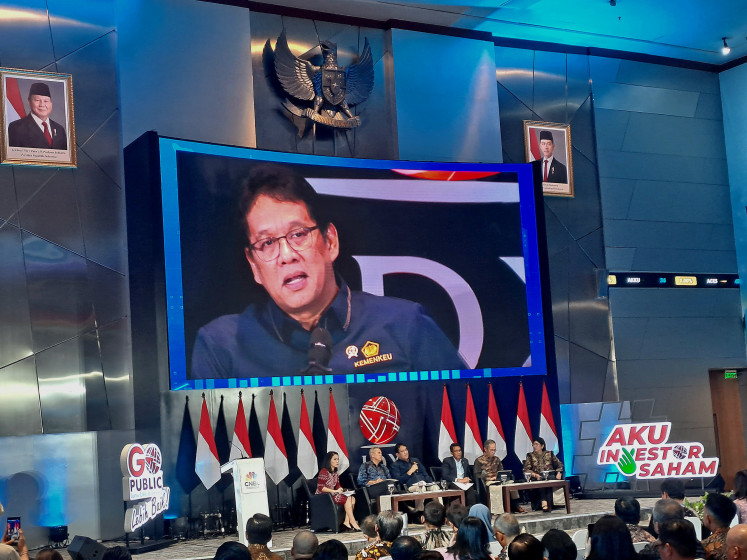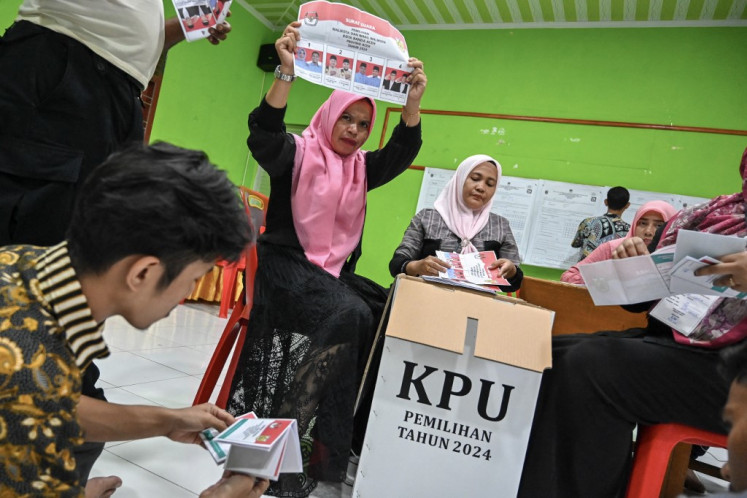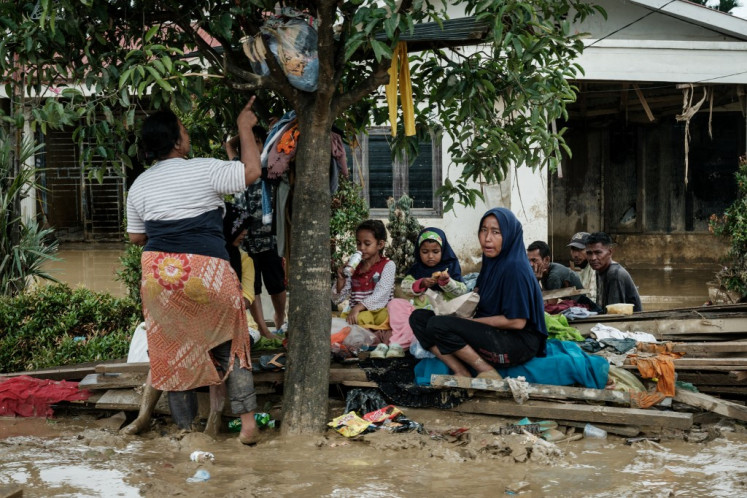Popular Reads
Top Results
Can't find what you're looking for?
View all search resultsPopular Reads
Top Results
Can't find what you're looking for?
View all search resultsIndonesia prepared to begin importing rice
Indonesia is ready to import rice again as the nation’s main harvest period ends and the price of the commodity begins to increase — a phenomenon that could fuel inflationary pressures, officials say
Change text size
Gift Premium Articles
to Anyone
I
ndonesia is ready to import rice again as the nation’s main harvest period ends and the price of the commodity begins to increase — a phenomenon that could fuel inflationary pressures, officials say.
Coordinating Economic Minister Hatta Rajasa, whose office holds the final say on whether the country should start importing rice, said Indonesia currently had a sufficient stockpile of 1.6 million tons of rice held by the State Logistics Agency (Bulog).
“However, imports would begin if necessary to avoid risks poor harvest due to extreme weather and also to maintain price stability,” he said.
“We need to address the risk of possible disasters such as drought,” Hatta said at a press briefing Friday.
“The government will increase [rice] stockpiles. We will buy rice from domestic [suppliers], but if there are price pressures due to insufficiency, we will still have the option of importing.”
Do the rice thing: A vendor arranges rice at Palmerah market in Central Jakarta on Sunday. The Industry Ministry predicts the price of rice would increase by 5 to 10 percent between July and August, while the government said it was ready to import rice to boost stockpiles. JP/Nurhayati
The Central Statistics Agency (BPS) reported an increase in the price of rice in June as the main contributor to the month’s headline inflation rate, which reached 5.54 percent during the month.
Imports kept food prices manageable in the domestic consumption-reliant economy, economists said, as infrastructure bottlenecks here pushed prices higher for local products compared to imported ones.
Higher food prices could hurt growth and policy makers fear they could stir social unrest, making self-sufficiency a top policy priority.
Trade Minister Mari Elka Pangestu gave assurances that rice stockpiles were sufficient for the fasting month of Ramadhan.
“We have taken steps to ensure that [rice stockpiles] will last until the end of the year, until next year’s first harvest,” she said.
However, Mari acknowledged that the price of rice had begun to increase.
“We maintain sufficient stock for Bulog, conduct market operations, mitigate disasters and anticipate climate change. We prefer to buy domestically, but if necessary, we will procure [rice] from overseas,” she added.
Reuters reported that Indonesia was in talks to import between 400,000 and 600,000 tons of rice from Vietnam to capitalize on lower prices, with shipment possible in the third quarter of this year.
Vietnam, the world’s second-largest exporter after Thailand, is benefiting from volatile prices in Thailand over the recent election.
In 2010, Indonesia produced 66.47 million tons of rice, up 2.07 million tons (3.22 percent) from the previous year, the BPS said.
The statistics agency forecasts this year’s rice output to grow moderately by 1.59 million tons, or 2.4 percent, to 68.06 million tons, lower than the government’s target of 4 percent to 5 percent.










